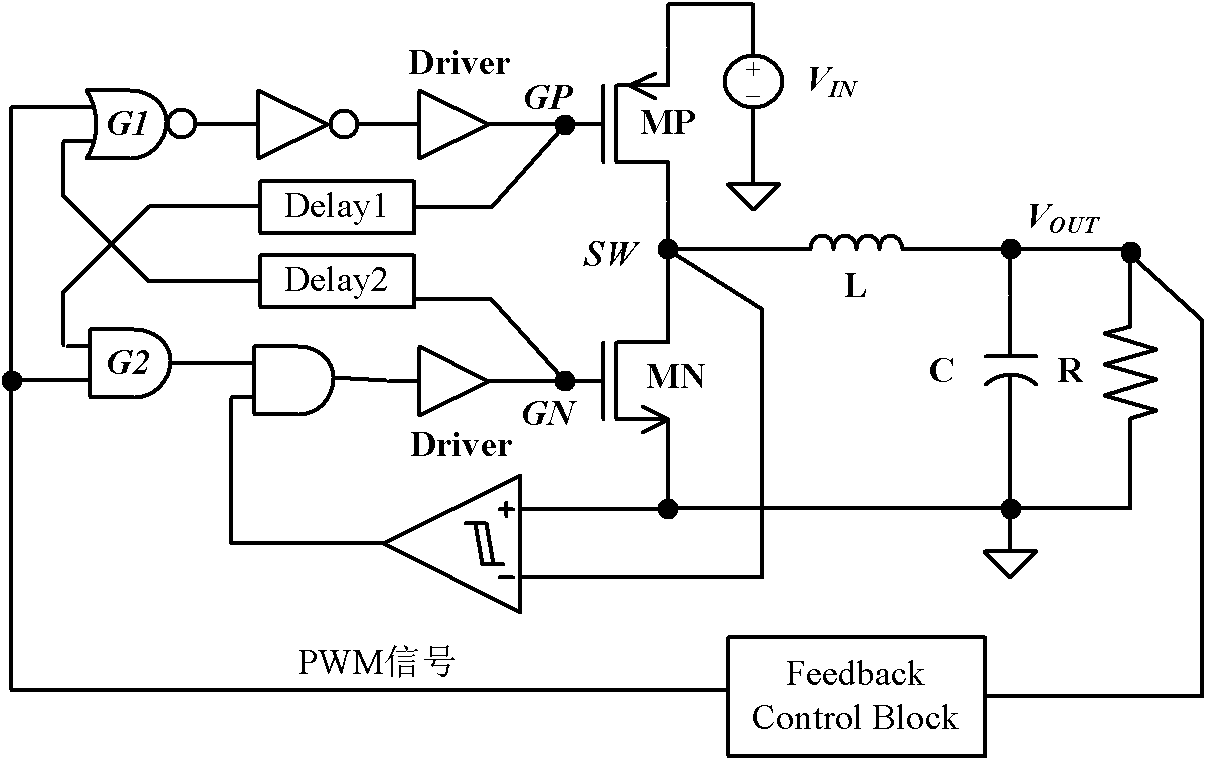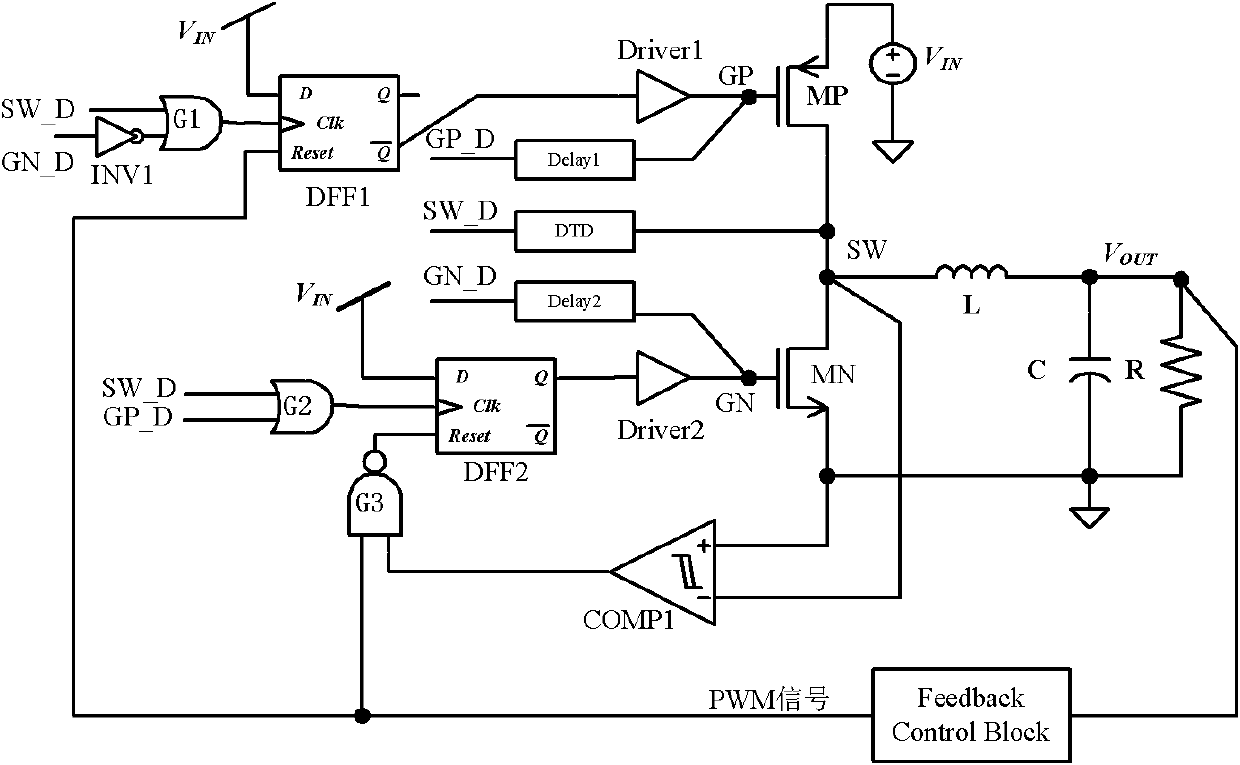A dead time control circuit used in a DC-DC converter
A dead time control, DC-DC technology, applied in the field of electronics, can solve problems such as long dead time, and achieve the effect of improving efficiency, reducing size and improving efficiency
- Summary
- Abstract
- Description
- Claims
- Application Information
AI Technical Summary
Problems solved by technology
Method used
Image
Examples
Embodiment Construction
[0015] The present invention will be further elaborated below in conjunction with the accompanying drawings and specific embodiments.
[0016] The structure schematic diagram of the dead time control circuit for DC-DC converter of the present invention is as follows: figure 2 As shown, it specifically includes the first OR gate G1, the second OR gate G2, the first D flip-flop DFF1, the second D flip-flop DFF2, the first NAND gate G3, the first delay unit Delay1, the second delay unit Delay2, The first dead time detector DTD, the first inverter INV1, the first comparator COMP1, the P-type power transistor MP, the N-type rectifier transistor MN, the first drive unit Driver1 and the second drive unit Driver2, wherein the The gate of the P-type power transistor MP is connected to the input end of the first delay unit Delay1, and the output end of the first delay unit Delay1 is connected to an input end of the second OR gate G2; the drain electrode of the P-type power transistor M...
PUM
 Login to View More
Login to View More Abstract
Description
Claims
Application Information
 Login to View More
Login to View More - R&D
- Intellectual Property
- Life Sciences
- Materials
- Tech Scout
- Unparalleled Data Quality
- Higher Quality Content
- 60% Fewer Hallucinations
Browse by: Latest US Patents, China's latest patents, Technical Efficacy Thesaurus, Application Domain, Technology Topic, Popular Technical Reports.
© 2025 PatSnap. All rights reserved.Legal|Privacy policy|Modern Slavery Act Transparency Statement|Sitemap|About US| Contact US: help@patsnap.com



